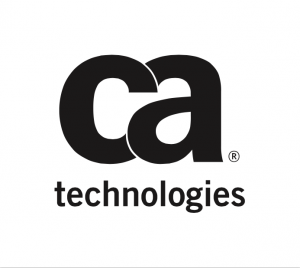This blog post is an excerpt from GovLoop’s recent guide, “Government Health IT: The Fight to Keep Public-Sector Data Secure.”
As health care technology and legislation continues to evolve, government health care agencies must continuously deliver improved capabilities and services to the citizens they support.
This isn’t always easy, given the time-consuming task of manually testing new software systems as well as the need for reliable test data to thoroughly test systems. Without high quality test data, public-sector IT teams struggle to realize the true potential of using agile development and a continuous delivery approach.
GovLoop recently interviewed Huw Price, Vice President of Application Delivery at CA Technologies. CA focuses on providing software for digital transformation within the application economy. Price shared how test data management can impact continuous delivery of robust systems by public-sector health care organizations, and how these agencies can adjust and deliver better software and services to their citizens.
Today in health care software development, as there is in much of government, there is a constant demand for process improvement, and for IT teams to work on accelerating time to market of their applications, mitigating risk, protecting information and patient data, and raising the quality of the user experience.
This, however, can be challenging as health care organizations still use legacy software and must deal with siloed data and records. Legacy testing software was built in an era of client server technology, where everything was isolated and stove-piped. This can make continuous delivery – a software development discipline where software is built and designed in such a way that the software can be released to production at any time – nearly impossible.
This is where an effective Test Data Management practice can help. Test Data Management (TDM) is all about having the right data delivered to the right place, at the right time. It’s a critical function that can deliver endless benefits to health care government organizations.
A major challenge faced is that most organizations lack a central TDM team or data provisioning service. This means that testers spend valuable time looking for or waiting for test data, which leads to testing bottlenecks that make agility and continuous delivery difficult.
“We’ve seen teams that had two or three week sprints, but spent nearly a month preparing the data for the sprint,” Price explained. Additionally, masking or subsetting production data means testing teams having to actually go and find the data to use. For health care organizations, who maintain significant amounts of Personally Identifiable Information (PII) and Protected Health Information (PHI), this is an arduous task, exacerbated by the inconsistent storage of data in uncontrolled spreadsheets.
“Additionally, you might have masked the data in the production system, but there still may be a phone app or a flat file that’s coming in, which is in an access database, that is being transformed,” Price explained. “And if you don’t know about that, then you’re opening yourself up to data theft or issues that relate to not knowing where your data is at all times.”
That’s why TDM is so important. CA solutions allow organizations to significantly accelerate their quality lifecycle by providing greater test coverage, faster test creation and repeatable test execution for software assets, while considerably reducing the time and resources required to bring products to market.
With a complete, end-to-end approach to TDM, driven by business requirements, organizations can test, mitigate risk, and minimize defect creation, thereby delivering quality software faster, and for less costs. CA offers their product, CA Test Data Manager, to automate the creating, maintaining and provisioning of the test data needed to rigorously test evolving applications. They also work alongside HMS, a certified CA Partner that provides a broad range of health care cost containment solutions to help agencies improve performance via innovative technology and powerful data services and analytics.
“The world is changing into having clearly defined models of processes and data and it’s critical to be able to adapt to change,” Price said. “Without building a model, every time you have to do new work or software development, you have to start from scratch. But if you have a model, all you have to do is change the model. The model can be used to autogenerate the correct record types and help to start testing earlier, helping the developers, testers and users deliver higher quality faster. This is why TDM matters.”
The application economy requires health care organizations to deliver higher quality applications faster than ever before while keeping sensitive data more secure than ever before. Legacy testing tools and reliance on manual testing are not suited for the speed and number of changes necessary to achieve continuous delivery. But with TDM tools, health care IT departments can remove bottlenecks in their software development lifecycle, protect critical data, and get citizens the life-saving services that they need.






Leave a Reply
You must be logged in to post a comment.